Chris-z-2135-46-blog - Space Travel

More Posts from Chris-z-2135-46-blog and Others
I would like to die on Mars. Just not on impact.
Elon Musk

One of 7 ways a trip to Mars could kill you
1) Your rocket could blow up before leaving Earth
Elon Musk’s plan to go to Mars involves strapping a giant spaceship atop the biggest rocket that humanity has ever built. Because any rocket launch basically involves a long, controlled explosion, it’s inherently precarious — no matter how many safety tests are done beforehand. If anything goes wrong, if the explosion gets out of control, the people strapped to that big container of fuel don’t stand a chance.
For context, NASA’s space shuttle program carried 833 passengers between 1981 and 2011. Of those, 14 people died in explosions on two high-profile accidents (Challenger and Columbia), a fatality rate of 1.6 percent. That’s vastly more dangerous than driving and a bit riskier than climbing Mount Everest. (The fatality rate for the Apollo program to the moon was even higher, at 9 percent.)
But, of course, SpaceX would be using newer, more complex, and yet-untested rockets to get to Mars. So it’s tough to say what the actual odds of death would be. Possibly much higher! Note that a couple of SpaceX’s smaller Falcon 9 rockets have either exploded on the launchpad or blown up mid-flight. Engineers and rocket scientists can improve that, but it’s unlikely that the risk will be zero.
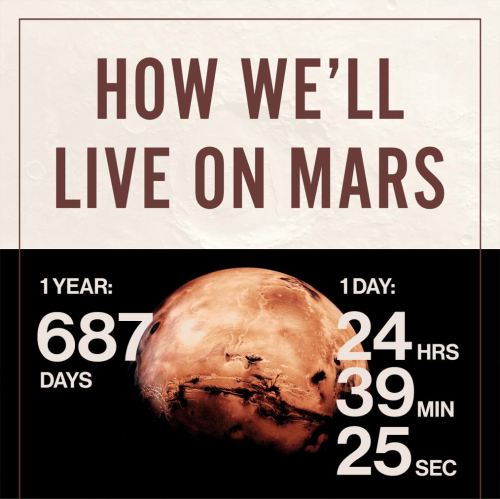
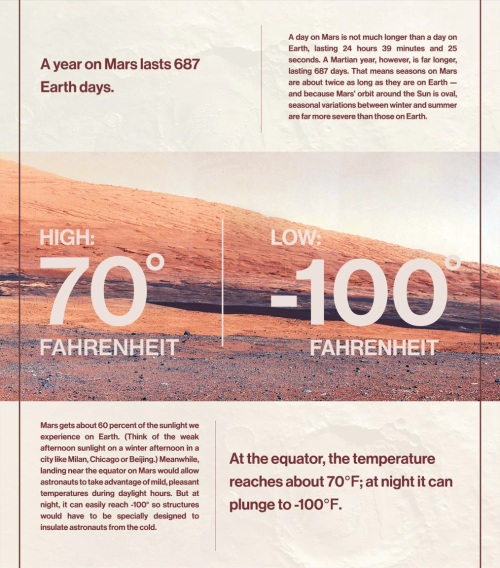
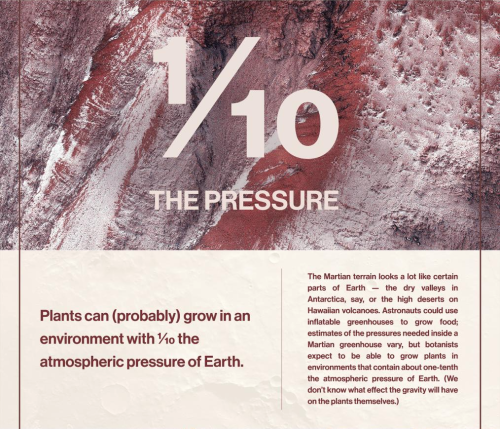
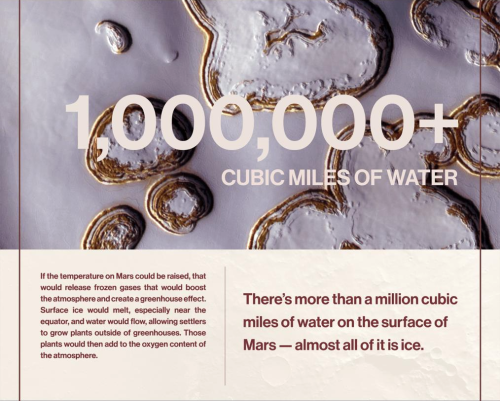
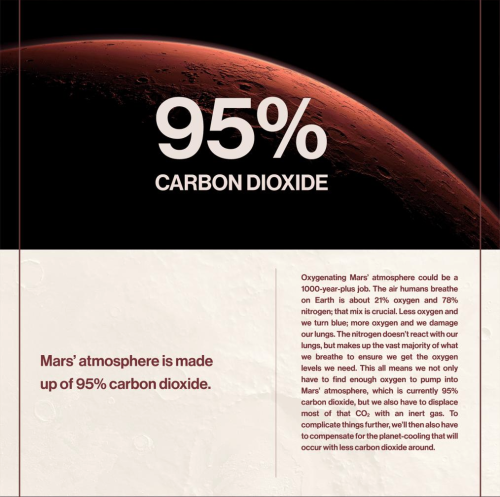
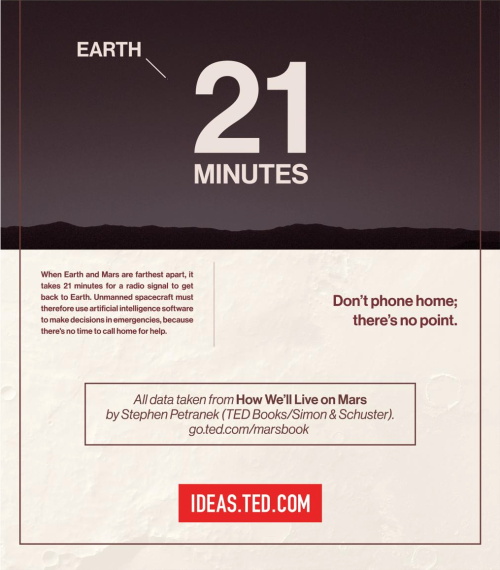
Life on Mars

Asteroid Terms: Explained
There are interesting asteroid characters in our solar system, including an asteroid that has its own moon and even one that is shaped like a dog bone! Our OSIRIS-REx mission launches at 7:05 p.m. EDT today and will travel to asteroid Bennu.

Scientists chose Bennu as the target of the OSIRIS-REx mission because of its composition, size and proximity to Earth. Bennu is a rare B-type asteroid (primitive and carbon-rich), which is expected to have organic compounds and water-bearing minerals like clays.
Our OSIRIS-REx mission will travel to Bennu and bring a small sample back to Earth for study.

When talking about asteroids, there are some terms scientists use that might not be in your typical vocabulary…but we’ll help with that!
Here are a few terms you should know:
Orbital Eccentricity: This number describes the shape of an asteroid’s orbit by how elliptical it is. For asteroids in orbit around the sun, eccentricity is a number between 0 and 1, with 0 being a perfectly circular orbit and 0.99 being a highly elliptical orbit.
Inclination: The angle, in degrees, of how tilted an asteroid’s orbit is compared to another plane of reference, usually the plane of the Earth’s orbit around the sun.
Orbital Period: The number of days it takes for an asteroid to revolve once around the sun. For example, the Earth’s orbital period is 365 days.
Perihelion Distance: The distance between an asteroid and the sun when the asteroid is closest to the sun.
Aphelion Distance: The distance between the asteroid and the sun when the asteroid is farthest away from the sun.
Astronomical unit: A distance unit commonly used to describe orbits of objects around the sun. The distance from the Earth to the sun is one astronomical unit, or 1 AU, equivalent to about 93 million miles or 150 million kilometers.
Diameter: A measure of the size of an asteroid. It is the length of a line from a point on the surface, through the center of the asteroid, extending out to the opposite surface. Irregularly shaped asteroids may have different diameters depending on which direction they are measured.
Rotation Period: The time it takes for an asteroid to complete one revolution around its axis of rotation. For example, the rotation period of the Earth is approximately 24 hours, or 1 day.
Spectral Type: The classification of an asteroid, based on a measurement of the light reflected by the asteroid.

Watch live launch coverage of OSIRIS-REx to asteroid Bennu starting at 5:30 p.m, on NASA TV: http://www.nasa.gov/nasatv
Make sure to follow us on Tumblr for your regular dose of space: http://nasa.tumblr.com
How Will We Safely Send the First Humans to the Red Planet?
We’ve been exploring the Red Planet for over 50 years – Mariner 4 launched on this day (Nov. 28) in 1964 and took the first photos of Mars from space the following summer.

We first explored the surface 40 years ago (Viking, 1976) and have had a continuous scientific presence on Mars for nearly 20 years, starting with the landing of the Pathfinder lander and Sojourner rover on July 4, 1997.
We currently have three orbiters – MAVEN, MRO and Mars Odyssey – and two rovers – Curiosity and Opportunity – actively exploring Mars.
These robotic explorers have already taught us a lot about the Red Planet, and future missions will teach us even more about how humans can live and work on the surface.

After sending humans on space exploration missions for the last 50 years, we have gained the experience and knowledge to send the first people to Mars. We are working across all areas to prepare for that historic day and want to share our progress with you.
Building the ride to Mars: NASA’s Space Launch System.
Our ride to Mars, the Space Launch System, is being built right now to meet the challenges of exploring deep space. When it comes to our journey to Mars and beyond, there are no small steps. Our video series by the same name breaks down those steps to show how SLS will send missions to the Red Planet.

Living on the Space Station will help humans live safely on Mars.
New crew members of Expedition 50 will soon conduct more than 250 experiments on the International Space Station. More than 2,000 experiments have already been done!
Experiments in fields such as biology, Earth science, physical sciences and human research are helping us unlock the knowledge needed to enable humans to live in space for long durations. If you missed the recent launch, check out NASA TV for a replay.

Testing Orion helps crew live and work in space and get home safely.
Scheduled to launch atop the Space Launch System rocket for the first time in 2018, an uncrewed Orion will travel farther into space than any spacecraft built for humans has ever gone before. When Orion returns to Earth, splashing down into the Pacific Ocean, it will take a landing and recovery group to safely return the capsule and crew back to land. A variety of testing on the ground, including to structures and parachutes, is helping make sure Orion can safely carry crew to new destinations in the solar system.

In late October, this recovery group, including NASA’s Ground Systems Development and Operations Program, the U.S. Navy, U.S. Air Force and contractor employees, completed its fifth successful practice run to recover Orion aboard the USS San Diego.

We’re using high resolution imagery from the Mars Reconnaissance Orbiter to learn more about potential landing sites for a human mission.
Who knows what surprises the Red Planet holds?
Our Curiosity Rover has discovered all kinds of interesting Mars features including meteorites. How do you learn more about a meteorite? Zap it with lasers, of course.

This golf-ball-sized, iron-nickel meteorite was recently found on Mars where ancient lakebed environments once existed. Named “Egg Rock” for the area in which it was found, it is the first meteorite to be examined using a laser-firing spectrometer.
By studying the conditions on Mars with vehicles like Curiosity, scientists are able to help prepare future astronauts to live on Mars.
How do you prepare the tallest rocket ever built for its first launch?
Another important component in successfully launching the Space Launch System rocket and Orion spacecraft on a Journey to Mars is the infrastructure work being done by our Ground Systems Development and Operations Program at Kennedy Space Center.

While efforts at our Vehicle Assembly Building continue, we hope you’ll be making your plans to join us at the launch pad for the first flight of SLS with Orion in 2018!
Preparing for a human journey to Mars
The next Mars rover will launch in 2020, and will investigate a region of Mars where the ancient environment may have been favorable for microbial life, probing the Martian rocks for evidence of past life.

It will collect samples and cache them on the surface for potential return to Earth by a future mission. Mars 2020 will also conduct the first investigation into the usability and availability of Martian resources, including oxygen, in preparation for human missions.
Make sure to follow us on Tumblr for your regular dose of space: http://nasa.tumblr.com


Atacama Desert
8 Things to Know About Our Commercial Crew Program
Two years after selecting the next generation of American spacecraft and rockets that will launch astronauts to the International Space Station, engineers and spaceflight specialists across our Commercial Crew Program, Boeing and SpaceX are putting in place the elements required for successful missions.

1. The Goal
The goal of our Commercial Crew Program is to return human spaceflight launches to U.S. soil, providing reliable and cost-effective access to low-Earth orbit on systems that meet our safety requirements. To accomplish this goal, we are taking a unique approach by asking private companies, Boeing and SpaceX, to develop human spaceflight systems to take over the task of flying astronauts to station.

2. Multi-User Spaceport
Boeing and SpaceX, like other commercial aerospace companies, are capitalizing on the unique experience and infrastructure along the Space Coast at our Kennedy Space Center and Cape Canaveral Air Force Station. Kennedy has transitioned from a government-only launch complex to a premier multi-user spaceport. In the coming years, the number of launch providers along the Space Coast is expected to more than double.

3. Innovation
Our expertise has been joined with industry innovations to produce the most advanced spacecraft to ever carry humans into orbit. Each company is developing its own unique systems to meet our safety requirements, and once certified by us, the providers will begin taking astronauts to the space station.

4. Research
With two new spacecraft that can carry up to four astronauts to the International Space Station with each of our missions, the number of resident crew will increase and will double the amount of time dedicated to research. That means new technologies and advances to improve life here on Earth and a better understanding of what it will take for long duration, deep space missions, including to Mars.

5. Crew Training
Astronauts Bob Behnken, Eric Boe, Doug Hurley and Suni Williams have been selected to train to fly flight tests aboard the Boeing CST-100 Starliner and SpaceX Crew Dragon.

The veteran crew have sent time in both spacecraft evaluating and training on their systems. Both providers are responsible for developing every aspect of the mission, from the spacesuits and training, to the rocket and spacecraft.

6. Launch Abort System
Boeing and SpaceX will equip their spacecraft with launch abort systems to get astronauts out of danger … FAST!

7. Expedited Delivery
Time-sensitive, critical experiments performed in orbit will be returned to Earth aboard commercial crew spacecraft, and returned to the scientists on Earth in hours, instead of days – before vital results are lost. That means better life and physical science research results, like VEGGIE, heart cells, and protein crystals.

8. Lifeboat
The spacecraft will offer safe and versatile lifeboats for the crew of the space station, whether an emergency on-orbit causes the crew to shelter for a brief time in safety, or leave the orbiting laboratory altogether. Learn more HERE.
Make sure to follow us on Tumblr for your regular dose of space: http://nasa.tumblr.com

Thunderstorms as seen from the ISS
js
-
 chris-z-2135-46-blog reblogged this · 8 years ago
chris-z-2135-46-blog reblogged this · 8 years ago -
 gnatposts liked this · 8 years ago
gnatposts liked this · 8 years ago -
 thegoodinatx liked this · 8 years ago
thegoodinatx liked this · 8 years ago -
 colonizemars reblogged this · 8 years ago
colonizemars reblogged this · 8 years ago